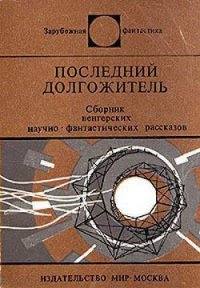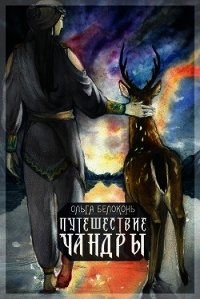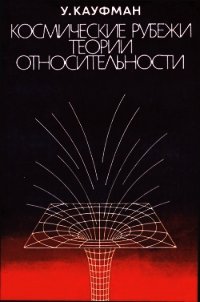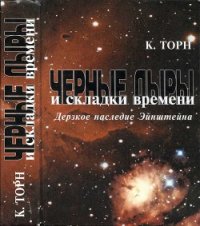Империя звезд, или Белые карлики и черные дыры - Миллер Артур (книги бесплатно без регистрации полные .txt) 📗
Interview by John Greenberg, 3 May 1983, OHP.
Interview by John Greenberg, 31 May 1984, OHP.
FRISCH OTTO. What Little I Remember (Cambridge, Cambridge University Press, 1979).
GALISON PETER AND BARTON BERNSTEIN. In any light: Scientists and the decision to build the superbomb, 1942–1954. Historical Studies in the Physical Sciences, 1989, 19, Part 2, 267–349.
GAMOW GEORGE. Nuclear reactions in stellar evolution. Nature, 1939, 144, 575–577.
Physical possibilities of stellar evolution. Physical Review, 1936, 55, 718–725.
Interview by Charles Weiner, 25 April 1968, AIP.
GANDHI MOHANDAS K. Autobiography: The Story of My Experiments with Truth (ist edn London, Public Affairs Press, 1948; reprinted, New York, Dover Publications, 1983).
GIDDINGS STEVEN AND SCOTT THOMAS. High energy colliders as black hole factories: The end of short distance physics. Physical Review D, 2002, 65, 056010-1-056010-12.
GLEICK JAMES. Isaac Newton (New York, Harper Collins, 2003).
GREENSTEIN JESSE, J.B. OKE AND H. SHIPMAN. Effective Temperature, Radius, and Gravitational Redshift of Sirius B. Astrophysical Journal, 1971, 169, 563–556.
On the Redshift of Sirius B. Quarterly Journal of the Royal Astronomical Society, 1985, 26, 279–288.
Interview by Rachel Prud’homme, 16 March 1982, OHP.
HAMADA T., EDWIN E. SALPETER. Models for zero-temperature stars. Astrophysical Journal, 1961, 134, 683–698.
HANSEN CARL J. AND STEVEN D. KAWALER. Stellar Interiors: Physical Principles, Structure and Evolution (New York: Springer-Verlag, 1994).
HARDY G. H. Excerpt from the Meeting of the Royal Astronomical Society, 9 January 1931. The Observatory, 1940, 54, 40.
Ramanujan (Cambridge, Cambridge University Press, 1941).
A Mathematician’s Apology (Cambridge, Cambridge University Press, 1941).
HARRISON B. KENT, KIP S. THORN, MASAMO WAKANO AND JOHN A. WHEELER. Gravitational Theory and Gravitational Collapse (Chicago, University of Chicago Press, 1965).
HAWKING STEPHEN AND WERNER ISRAEL. 300 Years of Gravitation (Cambridge, Cambridge University Press, 1987).
HEISENBERG WERNER. Mehrkörperprobleme und Resonanz in der Quantenmechanik. II. Zeitschrift für Physik, 1925, 41, 239–267.
Interview by Thomas. S. Kuhn, 30 November 1962, AIP.
Physics and Beyond: Encounters and Conversations. (New York, Harper, 1971).
Across the Frontiers. (New York, Harper Torchbooks, 1974).
HERANT MARC, STIRLING COLGATE AND CHRIS FRYER. Neutrinos and Supernovae. Los Alamos Science, 1997, №.25, 164–179.
HERREN GREGG. Brotherhood of the Bomb: The Tangled Lives and Loyalties of Robert Oppenheimer, Ernest Lawrence and Edward Teller (New York, Henry Holt, 2002).
HOLLOWAY DAVID. How the bomb saved Soviet physics. Bulletin of the Atomic Scientists, 50 (6) http://www.thebulletin. org/issues/1994/nd94/nd94Holloway.html
HOYLE FRED AND WILLIAM A. FOWLER. Nucleosynthesis in supernovae. Astrophysical Journal, 1960, 132, 565–590.
On the nature of strong radio sources. Monthly Notices of the Royal Astronomical Society, 1963, 125, 169–176.
ISRAEL WERNER. Dark stars: The evolution of an idea. In: Stephen Hawking and Werner Israel (eds.). Three Hundred Years of Gravitation (Cambridge: Cambridge University Press, 1987).
JEANS JAMES. The Radiation from the Stars. Nature, 1917, 99, 365.
The radiation of the stars. Nature, 1917, 99, 444–445.
Excerpt from the Meeting of the Royal Astronomical Society, 9 November 1917. The Observatory, 1917, 40, 432–434.
Excerpt from the Meeting of the Royal Astronomical Society, 9 January 1931. The Observatory, 1931, 54, 36–38.
JOHANSSON SVEN. The Nobel Prize for Physics. In: Tore Frangsmyr (ed.). Nobel Lectures in Physics: 1981–1990 (Singapore: World Scientific, 1993), 135–137.
KANIGEL ROBERT. The Man Who Knew Infinity: A Life of the Genius Ramanujan. (New York, Charles Scribner’s Sons, 1991).
KERR ROY. Gravitational Field of a Spinning Mass as an Example of Algebraically Special Metrics. Physical Review Letters, 1963, 11, 237–238.
KHAN K. A. AND ROGER PENROSE. Scattering of Two Impulsive Gravitational Plane Waves. Nature, 1971, 229, 185–186.
KHARITON YULI, KITOR ADAMSKII AND YURI SMIRNOV. The way it was. Bulletin of the Atomic Scientists, 1998, 54 (6); website http://www.bullatomsci.org/issues/1996/ nd96/nd96khariton.html
AND YURI SMIRNOV. (1993), ‘The Khariton version’. Bulletin of the Atomic Scientists, 1993, 49 (3); website http://www.thebulletin.org/issues/1993/may93/may93Khariton.html>
KHRIPLOVICH IOSIF B. The eventful life of Fritz Houtermans. Physics Today, 1992, 45, 29–37.
KILMISTER CLIVE W. Eddington’s Search for a Fundamental Theory: A Key to the Universe (Cambridge: Cambridge University Press, 1994).
KRAGH HELGE. Cosmo-physics in the thirties: Towards a history of Dirac cosmology. Historical Studies in the Physical Sciences, 1982, 13, 69-108.
DIRAC: A Scientific Biography (Cambridge: Cambridge University Press, 1990).
KUIPER G. P. White dwarfs: Discovery, observations, surface conditions. In: Conferences du College de France, Colloque International d’Astrophysique, 17–23 juillet 1939 (Paris: Hermann, 1941), 3-39.
LANDAU LEV. On the theory of stars. Physikalische Zeitschrift der Sowjetunion, 1932, 1, 285–288.
Origin of stellar energy. Nature, 1938, 141, 334–335.
LANG KENNETH AND OWEN GINGERICH. A Source Book in Astronomy and Astrophysics, 1900–1975 (Cambridge, MA. Harvard University Press, 1979).
LEE T. D. Hydrogen content and energy-productive mechanism of white dwarfs. Astrophysical Journal, 1950, 111, 625–640.
LITTLEWOOD J. E. Littlewood’s miscellany. Edited and with a foreword by Bela Bollobas. (Cambridge: Cambridge University Press, 1953), 1-22.
LUNDMARK KNUT, SERGE GAPOSCHKIN, BENGT EDLEN, C.P. GAPOSCHKIN, F.J.M. STRATTON AND C.S. BEALS (EDS.). Novae and White Dwarfs, Colloque International d’Astrophysique, 17–23 July 1939, under the presidency of Henry Norris Russell (Paris, Hermann, 1941).
MARSHAK ROBERT EUGENE. The Internal Temperature of White Dwarf Stars. Astrophysical Journal, 1940, 92, 321–346.
MCCREA WILLIAM H. The International Astronomical Union meeting in Paris 1935. The Observatory, 1935, 58, 256–265.
EDWARD ARTHUR MILNE: Obituary notice. Monthly Notices of the Royal Astronomical Society, 1951, 111, 161-70.
Interview by Robert Smith, 22 September 1978, AIP.
Harry Hemley Plaskett. Biographical Memoirs of the Royal Society, 1981, 27, 445–478.
Subrahmanyan Chandrasekhar. The Observatory, 1996, 116, 121–124.
Letter to the Editors. The Observatory, 1998, 118, 24.
MCVITTIE GEORGE C. Interview by David DeVorkin, 21 March 1978, AIP.
MERRILL PAUL W. The Nature of Variable Stars (New York, Macmillan, 1938).
MILLER ARTHUR I. The Myth of Gauss’ Experiment on the Euclidean Nature of Physical Space. ISIS, 1972, 63, 345–348.
Measurement problems in quantum field theory in the 1930s’. In: A. I. Miller (ed.). Sixty-Two Years of Uncertainty: Historical, Philosophical, and Physical Inquiries into the Foundations of Quantum Mechanics (London, Plenum Press, 1990), 139–152.
Early Quantum Electrodynamics: A Source Book (Cambridge, Cambridge University Press, 1994).
Albert Einstein's Special Theory of Relativity: Emergence (1905) and Early Interpretation (1905–1911) (Reading, MA, Addison-Wesley, 1981: Reprinted, London, Springer-Verlag, 1998).
Insights of Genius: Imagery and Creativity in Science and Art (New York: Springer-Verlag, 1996; Cambridge, MA, MIT Press, 2000).
Erotica, aesthetics and Schrödinger’s wave equation. In: Graham Farmeloe (ed.). It Must be Beautiful: Great Equations in Modern Science (London, Granta, 2002), 80-101.
MILNE EDWARD ARTHUR. Those in Authority: R. H. Fowler M. A. (Trinity), Senior Lecturer. The Granta, 1923, 32, 469.




